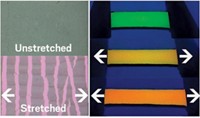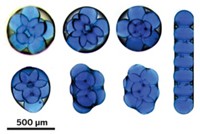Advertisement
Grab your lab coat. Let's get started
Welcome!
Welcome!
Create an account below to get 6 C&EN articles per month, receive newsletters and more - all free.
It seems this is your first time logging in online. Please enter the following information to continue.
As an ACS member you automatically get access to this site. All we need is few more details to create your reading experience.
Not you? Sign in with a different account.
Not you? Sign in with a different account.
ERROR 1
ERROR 1
ERROR 2
ERROR 2
ERROR 2
ERROR 2
ERROR 2
Password and Confirm password must match.
If you have an ACS member number, please enter it here so we can link this account to your membership. (optional)
ERROR 2
ACS values your privacy. By submitting your information, you are gaining access to C&EN and subscribing to our weekly newsletter. We use the information you provide to make your reading experience better, and we will never sell your data to third party members.
Materials
Nanoparticles Induce Polymer Patterns
Wave-like oscillations may serve as thin-film stress gauge
by Mitch Jacoby
August 3, 2009
| A version of this story appeared in
Volume 87, Issue 31
Nanoparticles can cause radially concentric patterns to form in thin films of block copolymers, according to researchers at NIST (ACS Nano, DOI: 10.1021/nn9002133). The study deepens understanding of polymer properties and may lead to a new way to gauge stresses present in thin films during polymer processing. Differences in the properties of the chemically distinct segments of block copolymers can cause these materials to assemble into nanosized cylinder-shaped domains. For years, researchers have used various "handles" including electric fields and temperature gradients to control the microscopic order in block copolymers by orienting the cylinders. The NIST team, which includes Xiaohua Zhang, Jack F. Douglas, and coworkers, reports a new way to induce such ordering. Introducing immobilized nanoparticles that span the copolymer film thickness causes domains of aligned cylinders to adopt concentric ring patterns, the team reports. Similarly, they observe undulating height patterns in nanoparticle-modified homopolymer films. The patterns arise from stresses that build up in the film during thermal treatment and could serve as a diagnostic to evaluate those stresses, the group proposes.





Join the conversation
Contact the reporter
Submit a Letter to the Editor for publication
Engage with us on Twitter